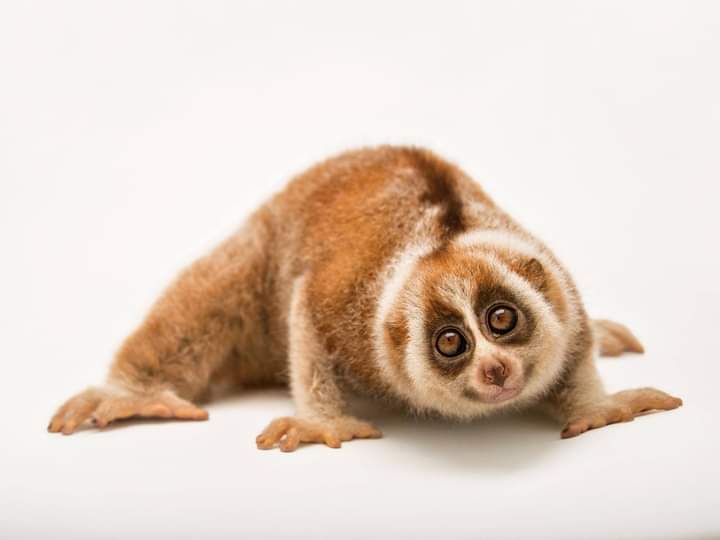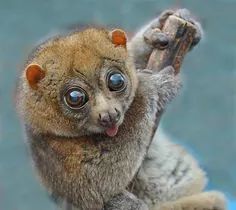
Loris Facts – Most of us are aware of the Loris (both kinds) that lives in India, Sri-Lanka, Assam, Southeast Asia, Indonesia and the Phillipines. They are part of a unique group of primates — they are ancient tree dwellers that move slowly. However, the most amazing thing about them is their strong grip. If you watch one move, one limb is airborne, but the other three are firmly grasping a branch.
If we held onto a branch for a minute or two (supporting our weight) our muscles begin to ache — not a loris, they can hold on for 24 hours! This is because they have a special mesh of blood vessels in their wrists and ankles, and they generously supply the muscles in their hands and feet with oxygen.
Pottos
In West Africa, they have a cousin — another animal to join this wonderful group — the harmless ‘Potto’.
- Just an extra bit of information — the word ‘loris’, is a dutch word that means ‘clown’. The Lorises and Potto look comical, so this name makes absolute sense
You might be lucky enough to see a potto in the tree, and then see its ‘scrotum’ and yell. ‘That is a male!’
Pottos have large scent glands in their genital area, so it might be a female, but because of those glands, which are paired (two) and larger in female pottos, she can be mistaken for a male. So like the spotted hyena, they have a pseudo-scrotum.
- Classified as ‘near threatened’.
Gelagos / Bushbabies Facts

There is a third primate that belongs to the group you find lorises in and pottos, and that is gelagos (or bushbabies), but unlike them, these primates have a long tail. They live in East and West Africa, and these cute primates have varying sizes as some are as small as mice (as shown you yesterday: The Rondo dwarf gelago.) and some are as large as a domestic cat.
- Loris’ are not found in Africa and the harmless Potto inhabits the canopy of rainforests in tropical Africa: from Nigeria, Guinea to Kenya and Uganda into the north of the Democratic Republic of Congo. All bushbabies are also harmless.

